-

- Writer
- Maho Ise
-

- Interviewer
- Yūya Nishimura
-

- Editor
- Eriko Masamura
Dr. Toru Takumi has the following principles for his research "Consider human beings as living organisms," "Regard the mind as a sensory or social system with empathy and emotion," and "Do not perceive only human beings as special." With these ideas in mind, Takumi has undertaken research, believing that mice can be used to understand the human mind without using living humans as experimental subjects.
However, he says that back then, his efforts entailed a fairly unorthodox approach and were not well understood by those around him. We asked him why he has been able to continue his research for more than 20 years, even in such an environment, and what he discovered as a result of his efforts.
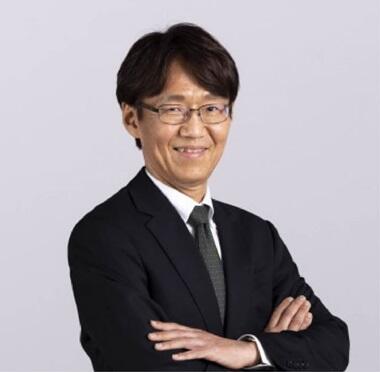
Kobe University Graduate School of Medicine, School of Medicine
A "desire to combine a hobby and work" led to me becoming a scientist

Dr. Takumi, I would like to start by asking you why you decided to pursue a career in medicine. Please also tell us about the backdrop against which you chose to become a scientist rather than a medical doctor.

That was a long time ago (laughs). Ever since I was a child, I thought it would be ideal to have my hobbies and work coincide. So, when I thought about my options, three things came to mind. The first was a professional athlete. They may have to practice hard, but essentially, they do it because it is fun. Shohei Ohtani, an active player in the American Major League Baseball, represents someone who does it because it is fun. However, when I was in elementary school, I already gave up on becoming a professional, thinking "With my athletic ability, it would be impossible for me to become a professional athlete."
The second was an artist. I had a relative who was an artist, and I was close to him. It may be hard to train drawing skills or practice playing a musical instrument, but you do it because you love it, and it is good if you can make money from it. Incidentally, this path to becoming an artist was closed to me when my elementary school teacher said to me, "You have no chance."
The last one left was that of a scientist. I had been thinking about becoming a scientist since I was in elementary or junior high school, and that dream has come true.
However, when you become a scientist, you realize that science and technology are different. Because technology ultimately benefits society and it is relatively easy to get research funding, but in science, it is impossible to know what will happen as we pursue research. The only driving force is the curiosity to find out more, and obtaining research funding is very difficult. I am a person who works in science, so it is not always fun, but being able to work on my own interests is appealing. In that sense, at this point in time, I think that my hobbies and work coincide 100%.
Nishimura: When you thought about becoming a scientist when you were in elementary or junior high school, did you already have a theme you wanted to work on?
Takumi: I used to think, "Mathematicians are cool." However, as is the case with many people who went on to pursue medical careers, we were all influenced by reading the biography of Hideyo Noguchi (*1) at that time.
Nishimura: I once saw a comment you made in an interview, "I wanted to be a geographer."
Takumi: That was when I was in junior high and senior high school. I loved geography in school and was good at it. In the subject rankings of the nationally standardized achievement test, geography was the only subject in which I couldn't be beaten by anyone. I was not so good at math and science, though, and my overall ranking dropped. I guess I am a bit of a nerd. I have always loved looking at maps anyway. I think everyone was given an atlas at school, but I read it so much that I had to buy another one separately because it got worn out.
Nishimura: That's amazing.
Takumi: Applying this to the topic of the coincidence of work and hobbies, I thought, "If I were to make a career out of what I love to do, I would be a geographer." As a matter of fact, after graduating from high school, I went on to study geography in the Department of Literature for about a year. If you want to study geography at the university level, you need to enroll in the Department of Litereature in Western Japan, but the Department of Science in Eastern Japan. Isn't it a little strange in the first place that to enter the field of geography, there are different avenues: the Department of Literature and Department of Science?
Since I was in Western Japan, I spent a year doing geography research in the Geography Department, but it was not what I had imagined. I began to think, "It is hard to know which is better, research 'A' or research 'B.'" In the field of science, you can measure progress by criteria such as being the first in the world to discover something, but as long as you are conducting research in the geography department in liberal arts, there are no such criteria. At that point, I realized, "Natural science is the way to go."

What led you to medical school after you thought, "Natural science is the way to go"?
Takumi: I thought, "I can be a scientist in the natural sciences," but it had been two years since I graduated from high school. At that time, medical school was an option even if you didn't go straight from high school. In the medical course at my university preparatory school, there were a lot of students who had failed the entrance exam five or six times, so I thought it was okay that I had only failed it twice. Because of this, I insisted that I was still equal to the current students.
That is why I decided to go to medical school instead of going to a science department at a university in Eastern Japan to study geography.
Nishimura: It is interesting how you decided to go to medical school.
Takumi: Even at that time, I did not have a strong desire "to become a doctor," but I intended to become a scientist. But I did not mind seeing blood or doing dissections. So, I felt that it was a good choice. However, I was hesitant to work in a hospital as a resident for more than two years. I was told, "If you go into internal medicine, you can do both clinical work and research." However, I was a little skeptical, thinking, "I would end up only doing half-measures." I thought I would go into emergency medicine if I would choose clinical work. This was because I wanted to be able to treat any patient that came my way.
In the end, I decided to go to a hospital in Okinawa Prefecture for clinical practice, but the rice in Okinawa at that time was not to my taste, so I thought, "This is not good." It may sound like a silly reason, but that's why I left my job at a hospital in Okinawa. It wasn't a process of elimination. I didn't think, I originally wanted to be a scientist rather than a doctor, so I decided to enter the Graduate School of Kyoto University, thinking, "It is finally time to do research."
- *1Hideyo Noguchi: Doctor and bacteriologist. He is also known for his efforts in yellow fever research.
DNA cloning, a labor of love that took up every waking moment
Nishimura: After that, I know that you moved on to the field of molecular biology. I would like to ask you about the state of molecular biology at that time.
Takumi: I graduated from the Graduate School of Kyoto University in the late 1980s, a time when molecular biology was expanding at a tremendous pace. Although this field of study started out focusing on E. coli and prokaryotes (*2), its scope expanded to include mammals. However, when I was a student, Kyoto University and Osaka University were the only universities in Japan that worked on mammalian molecular biology, so graduate students from all over the country gathered at these two universities.
When I was thinking about what subject I wanted to pursue as a scientist in the field of medicine, the idea that "the age of molecular biology has begun" was trending, and although I did not necessarily follow it, I thought, "I am going to study molecular biology."
Nishimura: Molecular biology has the image of being a highly competitive field.
Takumi: At that time, molecular biology had progressed from the initial clarification of mechanisms to artificial manipulation of genes, so to speak, feasible genetic engineering. At that time, it was said that there were approximately 100,000 mammalian genes, and the main focus of research was to isolate them individually, i.e., cDNA cloning. This cDNA cloning was a subject that many scientists were working on, and I am from the generation that thoroughly learned how to do gene cloning.
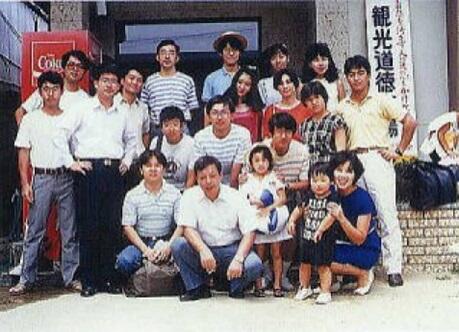
Takumi: Later, however, the Human Genome Project (*3) came out, analyzing the entire sequence of the human genome, and cDNA cloning became meaningless, but at that time, it was all about cDNA cloning.
This era was very easy to understand, and the game was to see who could clone, for example, the insulin receptor (*4) the fastest in the world, out of about 100,000 genes. It was a very clear-cut time, with no one paying attention to anything from second place, and it was meaningless unless you were number one. In a sense, it was a competition suited for the Japanese, because the more you try, the more likely you are to become number one. To explain it simply, it was a world where you had to screen 1,000 to find one, 10,000 to find one, or 1,000,000 to find one, and so on.
In our generation, hard work was the norm, and the lights were on in the laboratory even on weekday nights and weekends. It was a world that had nothing to do with work-life balance. In particular, Kyoto University was amazing, and I felt like I was working 24 hours a day, 365 days a year.
Nishimura: Your story conveys the enormity of the work, but when you look back on it now, do you feel that you are "glad that you did the hard work in those days?"
Takumi: It's hard to say. However, that way of approaching science is completely different from that of today's scientists. That's the thing, once you get to number one in cloning, you want to be number one again. Continuing to do this over and over resulted in the clarification of diseases, and I am happy that I was able to experience this when I was just starting out.
Although I have not yet reached the point where I can create drugs, I am still working as a scientist because I want to go beyond this experience. I am motivated by having that first experience of contributing to the elucidation of a disease.
- *2Prokaryotes: Single-cell organisms, typically a bacterium, that do not have a nucleus and other membrane-bound cell organelles.
- *3Human Genome Project: a research project initiated by the U.S. government in 1990 with the goal of deciphering the entire sequence of DNA in the nucleus of human cells. The full version was published in 2003.
- *4Insulin receptor: Insulin and its receptors are responsible for regulating blood glucose homeostasis.
A number of disease-causing genes were discovered as a result of "human wave tactics"
Nishimura: Dr. Takumi, you also discovered various causative genes of diseases such as ALS (amyotrophic lateral sclerosis) (*5) and arrhythmia. Were these discoveries made as an incidental result or an intended finding?
Takumi: They were discovered as a result of continuing cDNA cloning.
When I was in graduate school, I induced many mutations (*6) of ion channels that I had cloned using human wave tactics and investigated what kind of channel activity they had, but there was one thing I could not figure out at all. I later found out that it was dominant negative mutation (*7). When I induced a mutation called D-77 and expressed it, the current stopped flowing across the channel, and I wrote a paper without figuring out what was going on.
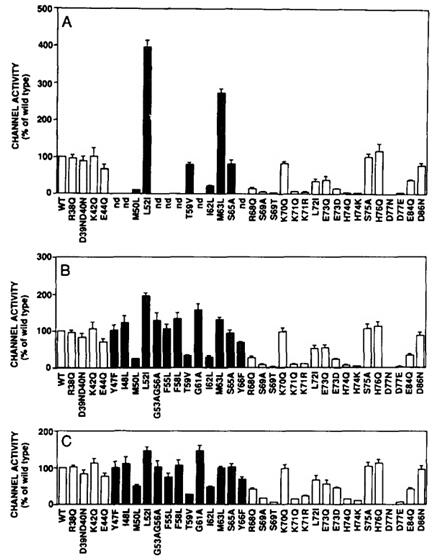
Takumi: I could only go so far, but when an overseas group used genetics to investigate a disease called long QT syndrome (*8), an arrhythmia disease, they found D-77, which I had discovered, in humans. When I found out about this, I was thrilled, "Such a beautiful thing can happen." I quit this research halfway through, though, so this is about someone else's work.
And that's not what I was aiming for from the beginning. In my case, it all started with a desire to figure out, "It is beyond comprehension. What is this?" and the rest was serendipity (a product of chance).
Nishimura: This story has the feel of the Age of Exploration. The map is blank. There is always an atmosphere of excitement. If we discover something, it might be a continent!
Takumi: That's what it was like when I was cloning at that time.
- *5ALS (amyotrophic lateral sclerosis): a disease in which the muscles of the limbs, throat, and tongue necessary for breathing gradually become thin and lose strength.
- *6Mutation: The appearance of a genetic trait in an organism that differs from that of its parents.
- *7Dominant negative mutant: A mutant that acts dominantly over normal gene products (proteins) and inhibits the function of normal proteins. Dominant negative mutants are created in various ways and used in cell biology experiments.
- *8Long QT syndrome: A genetic arrhythmia disease in which the electrocardiogram QT interval is prolonged due to abnormal myocardial repolarization resulting in a potentially lethal arrhythmia.
With the opportunities presented to us, we are working on circadian rhythms
Nishimura: Dr. Takumi, speaking of your research, you also have worked on the circadian rhythm (approximately 24-hour periodic rhythm) (*9).
Takumi: Ah yes, I had a connection with circadian rhythms. It was a time when molecular biology was beginning to enter various fields, and professionals like me, who could perform cloning, were highly valued. A professor at Kobe University who was engaged in research in immunohistochemistry was also conducting research in circadian rhythms and looking for someone who was conducting molecular biology research, so he came to me.
I had never studied circadian rhythms, but when I first heard about this, I thought, "Let's give it a go," and it turned out to be interesting. I think some things can be interesting when you try them out, and that's exactly what happened.
Nishimura: It is amazing that the research on circadian rhythms that began in this way has come to fruition later on.
Takumi: At that time, though, it was just interesting, and I didn't think about what would happen later. It was just curiosity and serendipity.
Nishimura: Then, as a laboratory head at Osaka Bioscience Institute, I believe you took the approach of investigating "abnormal behavior in mice" and "schizophrenia."
Takumi: I worked on circadian rhythms for about five years, and genetics is what allowed us to break down certain phenomena to a molecular level. Through my work on circadian rhythms, I became acutely aware that forward genetics is an extremely powerful tool for advancing our understanding of living organisms.
On the other hand, I thought that I had to do research that was different from what I had done before. So, I decided to move away from research on circadian rhythms and focus on higher brain functions. I wanted to investigate the system of the spirit and the system of the mind. However, back in the year 2000, if you tried to say things like "investigate the mind at a molecular level," you would be looked upon with suspicion, or rather, you would be regarded as "not a serious-minded scientist." In 1999, Dishevelled, a protein in the Wnt signaling system (a story about knockout mice and social behavior), first appeared in Cell (an American journal of medical biology), and I thought, "I can use this." That's when I decided to incorporate a genetic approach to investigating mental function.
By the way, in human genetics, the orthodox approach is to analyze human patients, but it is difficult to treat humans as research subjects in Japan. Even if it were possible, the number of subjects would be quite limited.
Human access is extremely difficult for someone who does not see patients and is far from clinical practice. It was even tougher then than it is now. I thought that even human mental disorders, if examined closely, have biological causes such as genomic or chromosomal abnormalities. I thought it would be a good idea to artificially create genomic abnormalities in mice. I started my research thinking that forward genetics could be performed using mice.
Although it is not in a direct sense, the importance of forward genetics that I learned studying circadian rhythms has been useful.
- *9Circadian rhythm: also called the biological clock. A circadian rhythm exists in most living organisms, including animals, plants, fungi, and algae, and refers to a cycle of approximately 24 hours.
Research on the human mind using mice was not understood and regarded as unorthodox
Nishimura: I see. Despite that the research was aimed at human conditions, the idea of studies targeting mice with behavioral abnormalities such as schizophrenia was probably a non-existent perspective at the time.
Takumi: I think there were almost none. There was a depression model, though.
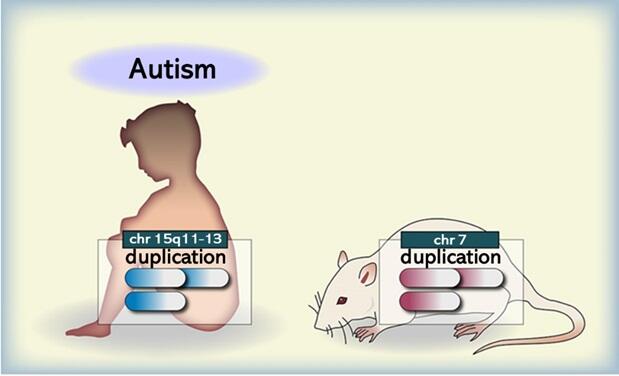
Source: Takumi T and Tamada K. Curr Opin Neurobiol. 48, 183-192, 2018.
Nishimura: Eventually, you ended up on the cover of Cell in 2009. However, I imagine that it must have been quite an unorthodox approach.
Takumi: These days, the schizophrenia model is commonly used, but at that time it was extremely risky.
Nishimura: Was it quite challenging to tell "the story of the human mind using animals that are not humans?"
Takumi: Yes. Even now, the gap has not been completely bridged, but back then, it was impossible.
Nishimura: It is amazing that you continue to do your research and produce results under such difficult circumstances.
Takumi: In terms of creating human models, mice are well established, and most neurological diseases can now be studied using mice. However, when it comes to higher brain functions, the neocortex is overwhelmingly different.
Ise: The neocortex is the place that controls intelligence, isn't it?
Takumi: Yes. Simply put, it is the place where perception, memory, language, and thought are controlled. Although it seems to be becoming common to conduct experiments on sensory and motor systems using mice, many people still question, "Is it okay" to conduct experiments on other systems?
Nishimura: I believe that after that, the brain-gut interaction (*10) and the role of inflammation and intestinal flora (*11) became a topic. Normally, once you start research on the brain, you tend to keep going in the same area, but Dr. Takumi, you are heading in the direction of looking at the whole as a system. This may be natural since you are researching in the medical field, but I think it is quite a jump. I would like to hear about this process as well.
- *10Brain-gut interaction: a phenomenon in humans in which the state of the brain affects the gut, and vice versa, the state of the gut also affects the brain.
- *11Intestinal flora: bacteria living in the intestines form clusters of different species, which stick to the intestinal wall with no gaps in between. These bacteria are called the intestinal flora because they look like a flower garden.
Research moves forward only because we have colleagues to collaborate with
Takumi: My lab's policy is to "just do it ourselves," and we work together with various experts.
For intestinal bacteria, we conducted research under the guidance of Professor Kenya Honda (*12) of Keio University. Although our laboratory started with molecular biology, we are now dealing with behavior as well. We do everything ourselves at every level, so we are always in need of money (laughs). To answer your question again, I think that we have people working together, starting from everyone in the lab.
Nishimura: I understand very well. On another note, by targeting the intestinal flora as well, has the understanding of brain developmental disorders significantly improved?
Takumi: Yes, I think so. However, this is not due to our achievements, but to the American group that preceded us. Before they took the lead, I had talked with Professor Honda about whether "it would be a good idea to try this for autism," but in the meantime, the research was published in the United States, so we had to follow them. Anyway, I think there is a world trend saying, "It's no good to just study the brain."
Nishimura: Many people may think it "sounds interesting" to expand the target of research from its core, but what's amazing is actually doing it in your own lab.
Takumi: We say, "Do everything", "Let's do everything", but it's important that we have colleagues who actually put it into action.
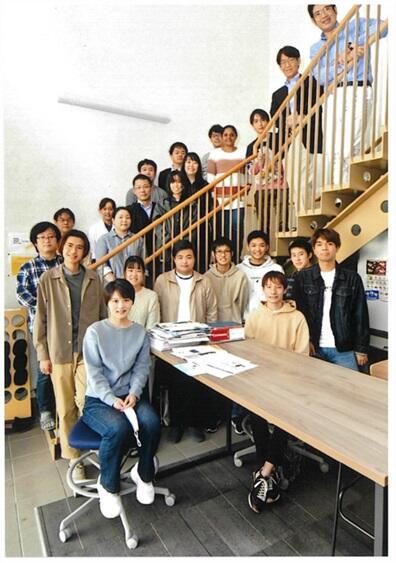
Nishimura: Many scientists try to get as far as possible, but Dr. Takumi, I think it's amazing how you have expanded your approach within a fixed theme. As I read your research papers one by one in order, I got the sense that the human brain is finally starting to be understood.
Takumi: We are now in an era where human biology (*13) can be targeted. However, ethical issues are even more difficult. In my research, I think that one of the ways to overcome the view that "mice are not good enough" is to "transfer human neurons into mice."
Understanding the entire network is difficult, but I've reached the point where I might be able to figure out at least the local network. In that sense, I think it would be quite amazing if we could create human cells and human networks in vivo in mice and prove it.
Nishimura: Do you feel that no matter what you may try, "you can't figure this out, that you just don't understand it"?
Takumi: That may be true. Especially in the case of mental disorders, because the target cannot be seen as a physical mass. For example, in Alzheimer's disease, targets such as nerve cells or deposits are more clearly defined, so all you have to do is remove them, but in mental disorders, there is no target.
Considering the difficulty of an unknown target, using computers may be the only way to answer our questions in the future.
- *12Kenya Honda, Professor, Department of Microbiology and Immunology, School of Medicine, Keio University.
- *13In human biology, human beings are compared to other living organisms and regarded as one species. Discipline with new concepts.
Tentatively defining the "mind" as something tangible, rather than something invisible
Nishimura: We have learned many things only because you continued to work on this project. Simultaneously, because there is so much we do not understand, the number of approaches has increased. In that sense, I think you not only want to produce research results but also want to "see it through to the end to achieve a greater understanding." How far are you willing to go in pursuing the topic of autism?
Takumi: Until now, I had the mindset of "trying one thing after another." Now that I'm older, I think I've entered an era where I have to set up goals and then back cast, although I don't really like this way of doing things.
Physicians and scientists in psychiatry and pediatric neurology may have the goal of "doing something about autism," and of course I hope they succeed. However, I just want to understand how the brain works, including mental disorders and autism.
I would like to figure out how the brain network contributes to human socialization and how sociality is created, but that may be difficult. The goal of my research is to "understand the mind," for which I am a program manager of a project call Moonshot (*14), but the mind is difficult to define. People have very different views on it.
Nishimura: Actually, I studied psychology when I was in graduate school. The mind cannot be grasped, no one has ever seen it, and we don't know if it exists or not, but it is most certainly a phenomenon. However, I think it is possible that when you get right down to the bottom of it, there is nothing there. It would be great if we could finally define the mind or get a glimpse of it in that context. How do you tentatively describe the mind, which is so difficult to define?
Takumi: We are also seeking an answer to this for Moonshot Research & Development project, but it is very difficult. It is really difficult. Moreover, as I am trying to do this using mice, when I'm asked, "How can you describe it in mice?", I honestly say, "Ahhh..."
However, one thing I can describe in mice is the emotional and empathic aspect of the mind. Something like empathy is present in mice, and they also show quite a bit of emotion. What is needed to further understand it is the sensory system. In the case of autism, the biggest core problem is socialization, and sensory sensitivity is a huge barrier to social life.
Even if a person cannot communicate well with those around him or her, it is not a big problem for the person with autism. It may be troublesome for those around him or her, but the person with autism may be thinking, "Leave me alone." In saying this, when sensory sensitivity is gone, a social life may become possible. Therefore, I think that it may be possible to study sensory system coordination plus emotion and empathy using mice.
The other thing is that, although it is difficult to link it to the mind, we can use mice to observe social behavior, or at least the interaction and communication part, which can be said to be the main symptom of autism. However, what happens when we replace it with the human mind?
Oxytocin, which is said to be the hormone of love, is currently being studied most intensely. When it is introduced into experimental subjects, they get closer to each other and interact more with each other. From this point of view, I think we can see that unraveling the social nature of mice will lead to understanding the human mind. However, the reality is that it is not easy to gain understanding.
Nishimura: It is very interesting that you put empathy and sociality as the axis of the "mind." I think that if we focus on subjective senses, we enter a world where we cannot know if they exist or not, but if we focus on a relationship (sociality), we can clearly confirm its existence. I think that basing our research on what clearly exists is important for connecting mice and humans. Psychology is a discipline based on the premise that the mind exists. I think the fact that its existence is not questioned poses a kind of issue. I believe that it is of great value to clarify the aspects of the mind whose existence can demonstrated.
Takumi: That's exactly what psychology is all about. Although most other fields include genetics, psychology is the "only discipline that has not adopted genetics."
- *14Moonshot R&D Program: an initiative by the Cabinet Office to promote large-scale research programs based on bold ideas to create innovative technological development.
Developing research by collaborating with technology experts
Nishimura: In the Moonshot program, Dr. Takumi, I think that your team, which is very skilled in handling mice, and those from the digital side will be collaborating. As I mentioned before, I think that unless there is a common understanding of "how to define the mind" and "how to understand the mind," the research cannot move forward. What do you think about this point?
Takumi: It is more about collaboration with the technology side than the digital side, that is, imaging. We are using mice that express, in their neurons, a gene called GCaMP (*15), which encodes a calcium-binding protein that acts as a calcium sensor. In other words, the mice were genetically modified. When exposed to light, they emit fluorescence that can be observed as electrical activity using a fluorescence microscope (*16).
Upon exposure to light, it is possible to incorporate genes that allow ions to flow to the mice themselves. These molecules cause ions to flow and become activated when exposed to light. We also use this method, which is called optogenetics.
Nishimura: Does that mean that a certain characteristic behavior is induced when exposed to light?
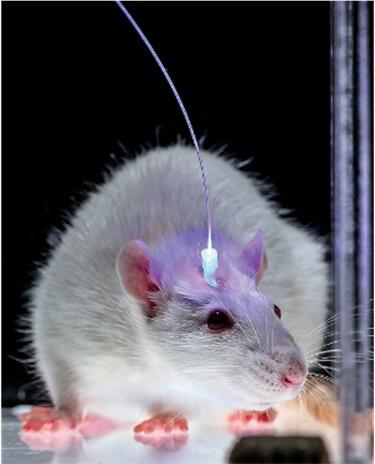
Source: Buchen L: Neuroscience: Illuminating the brain. Nature 465, 26-28, 2010
Takumi: When light is applied, the molecules that are exposed to the light change, ions flow, and the nerve cells fire. Consequently, behavior will change as a result of neuronal activity. In other words, the neural circuits are activated and the behavior changes accordingly.
Nishimura: As for the progress of research, do you have the impression that you are in the preliminary stage?
Takumi: We are currently working on modification.
Nishimura: That's amazing. Readers are bound to wonder, "What will happen next?" I would like to hear about positive aspects, because I know some people find it "a bit scary" that a mouse is made to move when exposed to light.
Takumi: Because it is a mouse, we were able to create a mechanism using a virus in their nerve cells, but this cannot be currently done in humans. For humans, I think we need new technology. On a more detailed level, there's also the issue of the light source. Even if you shine light from above on the human cranium, it will not hit the desired target correctly. There are many problems.
Regarding optogenetics, in addition to the ethical aspects, some kind of technological advancement is needed. In the case of mental disorders, there is a network abnormality. If we can control it, treatment methods, such as the circuit-based therapy that we are currently studying, may become an alternative to drug therapy. The hurdle is quite high, but if we can stimulate neurons while controlling them within the network, it may be possible.
Nishimura: I'm trying to use my imagination to the best of my ability as to what kind of technology it will be, but I think there will be advantages over using drugs.
Takumi: Well, that's right. I am not a clinician who sees patients on a daily basis. The direct purpose of the research is not treatment, but the result may potentially lead to a new treatment method. If we can reproduce the control by applying light, it will be the final proof of the circuit. In other words, behaviors such as empathy are carried out in this circuit.
Nishimura: In the sense that we may come to see the correspondence between the mind and brain networks, I think this may mean that molecular biology will be able to intervene in the area of the mind. To what extent do you think this Moonshot project will advance our current understanding of functional brain networks that affect the mind?
Takumi: That's difficult (laughs). Moonshot has nine goals, and I think you can probably understand 80% to 90% of what you want from Goal 9: "Realization of a mentally healthy and dynamic society by increasing peace of mind and vitality by 2050."
Nishimura: Now, from a different angle, how little do we know about the mind at the present stage? While studying psychology, I thought many times, "I don't know if I'm really understanding anything." However, I love psychology, so I don't think I'm doing something meaningless, but I do have the feeling that there are things that I can't see no matter how much I dig. We may always presume that the mind is something that we take for granted, but there may always be parts of the mind that we don't understand at all. I would like to know your thoughts on the parts that we don't understand.
Takumi: That's a difficult question (laughs). I think only at the biological level. I don't know about human psychology because I am not an expert in that field. In terms of the mind as a biological entity, the only answer I can give is that I think that a part of the mind is expressed as a sensory/social system that includes empathy and emotion.
Nishimura: Thank you very much for answering my difficult question. Going back to the beginning of today's interview, I think you started with something like circadian rhythms and have worked on behavioral abnormalities in mice until today. I think that period is about 20 years. I have the impression that you are neither pessimistic, saying, "I cannot understand anything," nor optimistic, saying, "I've got it all figured out," but you continue to hold both feelings at the same time.
- *15GCaMP: a fluorescent protein with a calcium-binding protein called calmodulin sandwiched in the middle of the green fluorescent protein (GFP) structure. When the morphology of calmodulin changes depending on the calcium concentration, the structure of GFP is distorted and the fluorescence intensity changes.
- *16A fluorescence microscope illuminates an object using ultraviolet light as its light source. The fluorescence microscope is an important tool for cell research.
One thing we've learned is "mental illness is not a special disease"
Takumi: Twenty years ago (at the end of the 20th century), it was considered suspicious for biologists, especially those who studied molecular biology, to tackle the issue of the mind. No one could say that confidently, and I was no different. That is one fact.
Then, during my research, I also dealt with mental illness, which is considered a different type of illness from other peripheral or neurological illnesses in medical practice. I think the general public has that sense, and students also feel that way.
However, after studying biology for more than 20 years, I realized that mental illness is not a special disease. Mental illnesses are common like other diseases such as cancer and diabetes and lifestyle-related diseases that everyone knows. Like many diseases, I found that mental illness is complex and involves both heredity and the environment.
As the difficult problem of how to stimulate the network remains an ultimate goal and the problem of the ambiguity of the target also remains, it will not be easy. However, just as targeted treatment has become possible over the past 50 years for cancer, targeted treatment may become possible for mental illness in 30 to 40 years.
Furthermore, genetics has revealed that mental illness is a disease of the synapses (*17). Thereafter, a consensus has been reached that mental illness is a disease of circuits. These are just some of the things we have learned.
However, we still do not fully understand how the mind, created by a mysterious network, works and how its abnormalities occur.
Nishimura: Thank you very much. Listening to you, I realized that human beings are, after all, living organisms. The term "human spirit" may give the impression that humans are special, but humans are just one type of living organism. Understanding humans on this basis will lead to understanding of the human spirit, and I see that this continuous process of comprehension is the most important point.
Takumi: I would be most grateful if you could comprehend that understanding humans as living organisms leads to understanding the human spirit and mind.
Ise: Although your talk tackled a difficult topic, I felt a sense of hope. We must not forget that patients and their families are suffering. However, you said, "Mental illness is just like any other common disease" and "Targeted treatment may be possible in a few decades." I hope that these words, and their meaning, would reach the patients and their families.
Takumi: Historically, medicine has viewed illness as a negative outcome and has tried to reduce the negative outcomes to zero. But the Moonshot project attempts to obtain positive outcomes starting from zero. Furthermore, it is our mission to figure out how to express things using, for example, mice, and I look forward to the possibilities that will be revealed by looking at things from a broad perspective that goes beyond the conventional medical field.
Nishimura: Thank you very much. Personally, I changed my field from psychology to anthropology and continued my studies, and I thought that unless we view humans as living organisms, without perceiving them as special, we wouldn't be able to understand human society. I also thought, "Maybe we are treating culture and spirit as extraordinary entities" and "It may be better to study the behaviors themselves."
That "humans are living organisms" can be taken for granted, but I hope that when we go back to this important starting point, we will see very positive changes. I think it's wrong to treat only human beings as special because there is no reason for that special treatment. We could treat mental illness and the mind as something more natural if there were a reason for that. I have high hopes that the bridge is being built right now.
- *17Synapse: The junction where neurons communicate with each other.
Please look at the following brief introduction of Takumi's current (and future) research, "Construction of a virtual reality (VR) system that can measure neural activity of mice while they are moving," which is not included in this text.
https://www.kobe-u.ac.jp/research_at_kobe/NEWS/news/2023_08_24_01.html
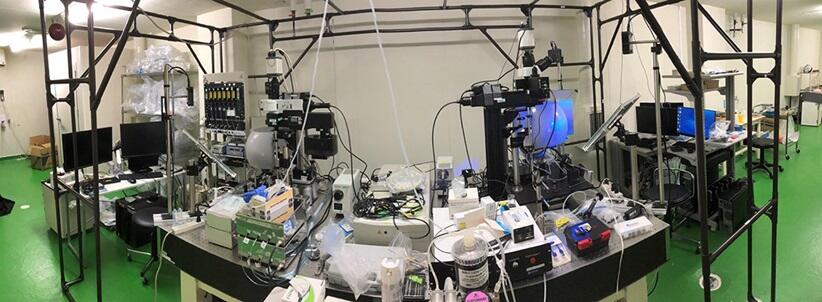
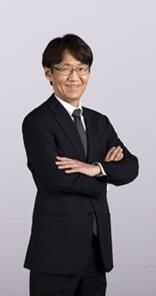
Profile
Toru Takumi
Kobe University Graduate School of Medicine, School of Medicine
Born in Himeji City, Hyogo Prefecture. After completing his graduate studies at the Graduate School of Medicine at Kyoto University, he worked as a Human Frontier Science Program (HFSP) fellow at the Massachusetts Institute of Technology in the United States and following this, started his research on mental disorders as a Principal Investigator at the Osaka Bioscience Institute. After that, he worked as a Professor at the Hiroshima University, School of Medicine and a Senior Team Leader at the RIKEN Brain Science Institute. In 2019, he became a Professor at the School of Medicine and Graduate School of Medicine at Kobe University. In 2021, he was appointed as the Vice Dean for Research, Director of the Center for Medical Transformation, and Director of the Center for Mental Disorders.
Original article provided by esse-sense and translated by Science Japan.




